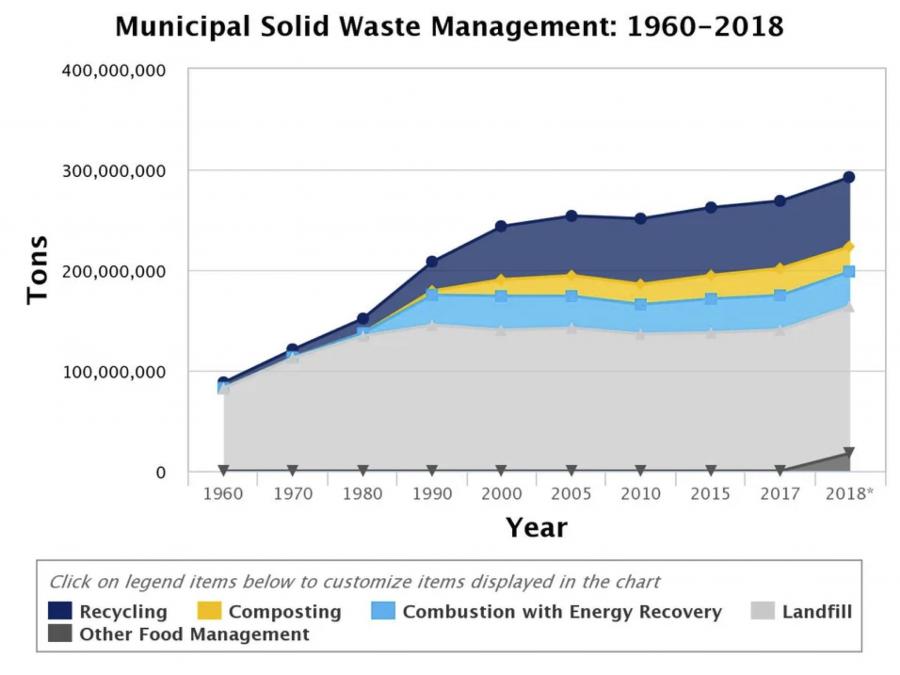
Merging Net Zero With Zero Waste
Waste stream managers find an unlikely ally in the international biofuels industry
LANSING, W.V., UNITED STATES, June 5, 2024 /EINPresswire.com/ -- The international biofuels industry has found an unexpected ally in the waste management sector. A heightened global urgency to reduce greenhouse gas emissions (GHGs) is incentivizing renewable fuels production like never before.
Comparably, scrutiny of the waste sector is pressuring it to more sustainably manage municipal solid waste (MSW), and wastewater treatment is pushing processes that recycle and repurpose organic materials into energy resources.
These two industries are connecting in surprising ways as they modify their processes to lessen environmental impact.
A problem of incomparable scope...
According to the federal EPA’s 2018 study, 292.4 million tons of municipal solid waste (MSW) is produced in the United States each year. Americans send almost half of that trash (49.997%) to landfills annually. There are more than 3,000 active landfills in the United States alone, taking up 1,800,000 acres of habitat that displaces local flora and fauna.
Worse, yearly MSW production has been steadily climbing, year over year, since recording first began in the 1960s. For many Americans, the fact that they don't see egregious mounds of trash every day puts this problem “out of sight, out of mind.” Inevitably, though, this head-in-the-sand mindset will create major problems, and we're already seeing the beginnings of that. From hazardous waste to running out of space to environmentally damaging byproducts, we may be overwhelmed by the rising costs—both fiscal and environmental—of landfills in this century.
What You Can’t See CAN Hurt You.
In a landfill, food, grass clippings, and other organic materials are densely packed beneath the surface. This means they decompose with the absence of oxygen (anaerobically). For that reason, all types of waste break down significantly more slowly in landfills than they would in nature.
Landfills and wastewater treatment plants have an overabundance of fats, oils and grease (FOG) waste that is collected in large quantities by commercial kitchens. Once in a landfill, when FOG breaks down, it combines with rainwater to form a leachate that contaminates surrounding soil and often groundwater. Through this oxygen-deprived breakdown, organic materials also emit methane as a byproduct, making landfills volatile and gassy.
The municipal solid waste (MSW) sector is the fourth-largest contributor to global greenhouse gas (GHG) emissions, accounting for approximately 5% of the global greenhouse budget. This includes methane. In 2021, the waste sector generated nearly three percent of the total GHG emissions of the U.S., emitting 169.2 MMT of GHGs into the atmosphere.
Landfills are the largest contributor of waste sector GHGs, and the third-largest source of total U.S. methane emissions, after fossil fuels and farming/land use.
There IS a solution.
Happily, there is a bright spot on the horizon with the Greasezilla℠ brand Brown Grease FOG separation system. This new technology is proving to support the production of liquid biofuels, such as renewable diesel, biodiesel, sustainable aviation fuel and marine fuels. It does so by diverting brown grease from the waste stream into the Greasezilla FOG separation process.
There, it is separated into three parts—a hefty depth of pasteurized water that can safely re-enter the treatment stream; a thin layer of “batter,” which can be siphoned off for use as an anaerobic digestion feedstock or landfilled; and a moderately thick layer of Brown Grease Advanced BioFuel (ABF) feedstock.
This product is ready as is to be incorporated either into ABF refinery streams, or used to fuel the operation of the Greasezilla apparatus itself. The latter makes Greasezilla operation amazingly efficient and cost-effective. The former means that, for the renewable fuels industry, the Brown Grease ABF feedstock—instead of being relegated to the landfill to become a liability—is now proving a valuable resource and asset in today's market.
High Resolution Files of images shown may be downloaded at: https://drive.google.com/drive/folders/1ZMYc8NZUBFJAUVBUWOnBS5uhVTj_p6Qn
About Greasezilla
Greasezilla provides services and technology that significantly reduce or eliminate costs associated with dewatering, drying, lagooning, land applying, composting, incinerating, hauling, tipping or any further treatment of wastewater and grease trap output. In the process, Greasezilla creates a biofuel feedstock sold on commodity exchanges for competitive rates. For more information: http://www.greasezilla.com
Greasezilla
Media Contact: Brian Levine | Phone: 304-658-4778 | Email: info@greasezilla.com
Brian Levine
Greasezilla
+1 304-658-4778
email us here
Visit us on social media:
Other
EIN Presswire does not exercise editorial control over third-party content provided, uploaded, published, or distributed by users of EIN Presswire. We are a distributor, not a publisher, of 3rd party content. Such content may contain the views, opinions, statements, offers, and other material of the respective users, suppliers, participants, or authors.



